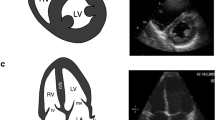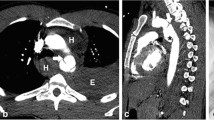Abstract
Background:
The decision in favor of surgery or nonoperative conservative treatment in blunt and penetrating abdominal trauma requires a precise diagnosis that is not always possible with imaging techniques, whereby there is great danger that an injury to the diaphragm or intestines may be overlooked. To avoid such oversights, indications for exploratory laparotomy have traditionally been generous, to the extent that up to 41% of exploratory laparotomies turn out to be nontherapeutic and could be, or could have been, avoided with laparoscopy.
Materials and Methods:
A diagnostic laparoscopy with therapeutic option should only be attempted in stable patients. Three trocars are usually used and the abdomen is explored systematically, beginning with the right upper quadrant and continuing clockwise. Hollow viscus injuries and injuries to the diaphragm and mesentery can be detected and sutured laparoscopically. Injuries to parenchymal organs are not a primary focus of laparoscopy, but with a laparoscopic approach, they usually no longer bleed in stable patients and can be sealed with tissue adhesive and collagen tamponade to prevent re-bleeding.
Results:
The routine use of laparoscopy can achieve a sensitivity of 90–100% in abdominal trauma. This can reduce the number of unnecessary laparotomies and the related morbidity.
Conclusion:
Laparoscopy can be performed safely and effectively in stable patients with abdominal trauma. The most important advantages are reduction of the nontherapeutic laparotomy rate, morbidity, shortening of hospitalization, and cost-effectiveness. In the future, new developments in and the miniaturization of equipment can be expected to increase the use of minimally invasive techniques in abdominal trauma cases.
Similar content being viewed by others
References
Ballard RB, Rozycki GS, Newman PG, Cubillos JE, Salomone JP, Ingram WL, Feliciano DV. An algorithm to reduce the incidence of false-negative FAST examinations in patients at high risk for occult injury. J Am Coll Surg 1999;189:145–51.
Rozycki GS, Ballard RB, Feliciano DV, Schmidt JA, Pennington SD. Surgeon-performed ultrasound for the assessment of truncal injuries: lessons learned from 1,540 patients. Ann Surg 1998;228:557–67.
Shanmuganathan K, Mirvis SE, Chiu WC, Killeen KL, Hogan GJF, Scalea TM. Penetrating torso trauma: triple-contrast helical CT in peritoneal violation and organ injury - a prospective study in 200 patients. Radiology 2004;231:775–84.
Killeen KL, Shanmuganathan K, Poletti PA, Cooper C, Mirvis SE. Helical computed tomography of bowel and mesenteric injuries. J Trauma 2001;51:26–36.
Mihos P, Potaris K, Gakidis J, Paraskevopoulos J, Varvatsoulis P, Gougoutas B, Papadakis G, Lapidakis E. Traumatic rupture of the diaphragm: experience with 65 patients. Injury 2003;34:169–72.
Leppäniemi A, Salo J, Haapiainen R. Complications of negative laparotomy for truncal stab wounds. J Trauma 1995;38:54–8.
Villavicencio RT, Aucar JA. Analysis of laparoscopy in trauma. J Am Coll Surg 1999;189:11–20.
Chol YB, Lim KS. Therapeutic laparoscopy for abdominal trauma. Surg Endosc 2003;17:421–7.
Smith RS, Fry WR, Morabito DJ, Koehler RH, Organ CH Jr. Therapeutic laparoscopy in trauma. Am J Surg 1995;170:632–6.
Taner AS, Topgul K, Kucukel F, Demir A, Sari S. Diagnostic laparoscopy decreases the rate of unnecessary laparotomies and reduces hospital costs in trauma patients. J Laparoendosc Adv Surg Tech A 2001;11:207–11.
Uranüs S, Pfeifer J. Nonoperative treatment of blunt splenic injury. World J Surg 2001;5:1405–7.
Ivatury RR, Simon RJ, Stahl WM. A critical evaluation of laparoscopy in penetrating abdominal trauma. J Trauma 1993;34:822–8.
Livingston DH, Tortella BJ, Blackwood J, Machiedo GW, Rush BF Jr. The role of laparoscopy in abdominal trauma. J Trauma 1992;33:471–5.
Gorecki PJ, Cottam D, Angus LD, Shaftan GW. Diagnostic and therapeutic laparoscopy for trauma: a technique of safe and systematic exploration. Surg Laparosc Endosc Percutan Tech 2002;12:195–8.
Chelly MR, Major K, Spivak J, Hui T, Hiatt JR, Margulies DR. The value of laparoscopy in management of abdominal trauma. Am Surg 2003;69:957–60.
Leppäniemi A, Haapiainen R. Diagnostic laparoscopy in abdominal stab wounds: a prospective, randomized study. J Trauma 2003;55:636–45.
Fabian TC, Croce MA, Stewart RM, Pritchard FE, Minard G, Kudsk KA. A prospective analysis of diagnostic laparoscopy in trauma. Ann Surg 1993;217:557–65.
Author information
Authors and Affiliations
Corresponding author
Rights and permissions
About this article
Cite this article
Uranüs, S., Dorr, K. Laparoscopy in Abdominal Trauma. Eur J Trauma 36, 19–24 (2010). https://doi.org/10.1007/s00068-010-9219-5
Received:
Accepted:
Published:
Issue Date:
DOI: https://doi.org/10.1007/s00068-010-9219-5




